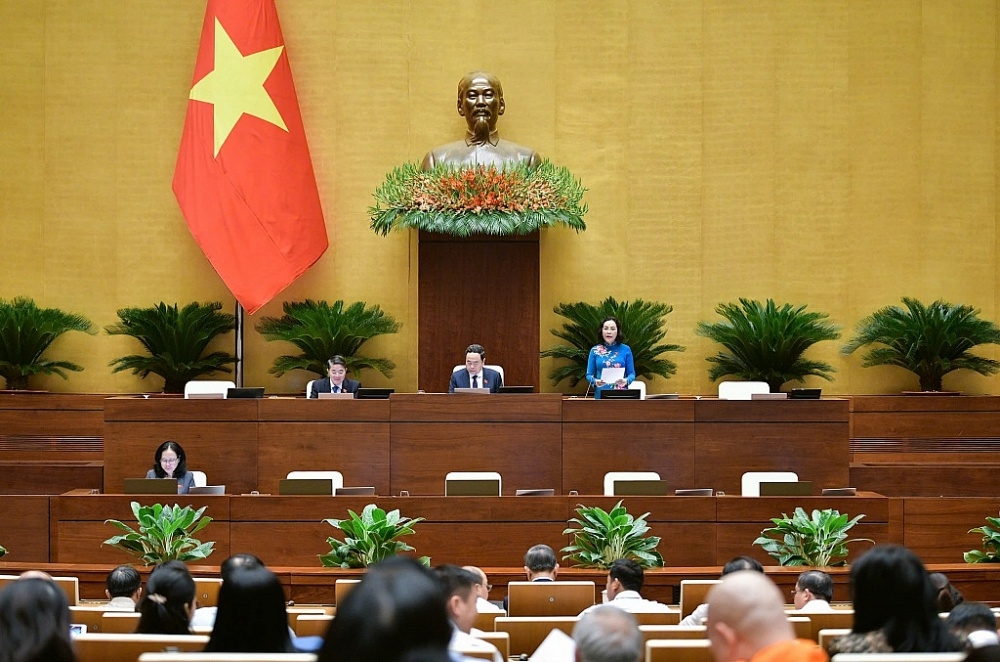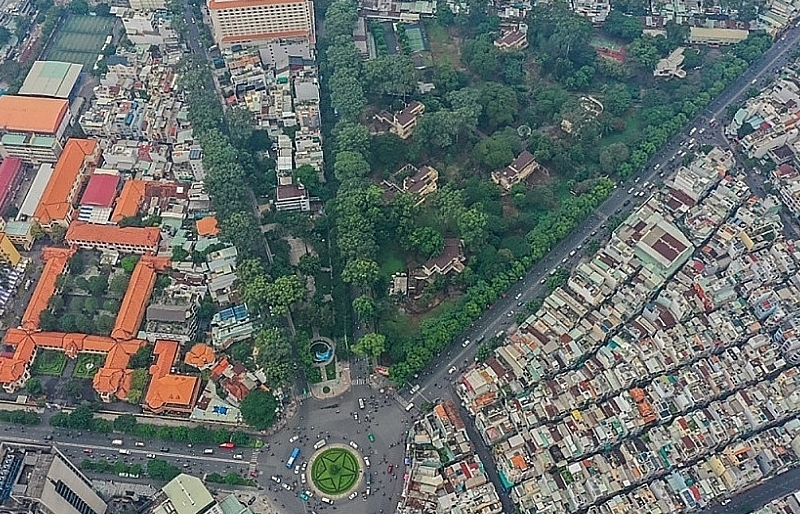Public debt can not be reduced in a short term, but needs a roadmap
| Brexit does not impact on public debt | |
| Vietnam pays back $3 billion on foreign debts during first half of 2016 | |
| Vietnam’s public debt to double in ten years: expert |
 |
| Deputy Director of Debt Management Department, Ministry of Finance, Mr. Vo Huu Hien. |
It is said that public debt is an important resource for the implementation of investment of infrastructure, promoting economic growth and macroeconomic stability. Specifically, what does the public debt impact on the economic growth, Sir?
Vietnam's public debt is mainly from loans to invest in social and economic infrastructure. Previously, we used the loans for rehabilitation after the war, then loans were used for reconstruction of infrastructure as Vietnam remained a the low-income country. These days, these loans are mainly used for the construction of road infrastructure. In fact, a lot of roads, facilities, infrastructure using public debt have been completed and used effectively.
For provinces, the public debt was used to support the upgrading of urban infrastructure. So far, all municipalities in the country including urban transportation, environmental remediation was supported from public debt, especially some huge projects such as subway systems and anti-inundation measures in Hanoi and HCM city.
Therefore, the public debt has played an important role in economic development. Thanks to public debt, economic infrastructure of Vietnam has been significantly improved.
According to the latest announcement of the Ministry of Finance, the public debt structure of Vietnam in the last 5 years has shown a certain shift. Could you tell us more specific analysis about this shift?
It can be said, in recent times, the matter of public debt has always been in the interests of the Party, State and Vietnamese people, especially in the period of the debt crisis in some European countries.
In Vietnam, by the end of 2015, the public debt including Government debt accounted for 80.8%, guaranteed debt by the Government accounted for 17.8% and local government debt accounted for 1.4%.
In the government debt structure, the rate of domestic debt increased from 39% in 2011 to 57% in 2015 and the rate of foreign debt decreased respectively by 61% in 2011 to 43% in 2015, suitable with the Strategy for public debt and external debt of the country in the period 2011-2020 and the vision to 2030.
Regarding the term structure of the debt portfolio of the Government, the Government's domestic debt is mainly government bonds with maturity to June, 2016 is about 5 years, expressing significant increase compared to 4.4 years at the end of 2015 and 3 years at the end of 2013. For external debt, ODA and preferential loans make up a high proportion (over 94%) with an average term of over 10 years.
Regarding the structure of interest rates, for the domestic debt, the focus on mobilizing domestic capital through the issuance of government bonds has contributed to promoting the development of the domestic bond market and lower interest rates of this capital. Interest rates of Government bonds declined from an average of 12% / year in 2011 to 6.5% in 2014 and about 6% in 2015. For foreign debt with ODA loans, and preferential loans with high proportion, the average interest rate at the end of 2015 is about 2% / year.
Currency structure of the debt portfolio of the Government is mainly in a number of major currencies including Vietnam dong with 55% of loans; USD accounting for 16%; Japanese yen accounting for 13% and the Euro accounting for approximately 7% and other currencies.
In Government debt, domestic debt accounted for 57%, foreign loans accounted for 43%. Domestic debt tends to increase while foreign loans reduced from 61% in 2011 to 43%, which is suitable with the strategic direction of public debt and national debt of foreign countries. At the same time, this trend can minimize risks of exchange rate fluctuations. For domestic debt, most loans are issued from government bonds in the domestic capital market; Foreign loans from preferential ODA, more than 94% of foreign loans from the Government's preferential ODA.
Do these above matters affect the safety of public debt or not, sir?
About the structure of public debt, we have exchanged information with the World Bank (WB) and International Monetary Fund (IMF) for analysis and conclusion is that the structure of public debt of Vietnam now is relatively stable, the repayment capacity is still safe.
This review was also posted at the World Bank press release on the matter of Vietnam's public debt not long ago.
The debt structure is sustainable but public debt is rising rapidly again. According to data of the Ministry of Finance, in the period 2011-2015, the public debt increased by about 12.2% of GDP, from 50% in 2011 to 62.2% at the end of 2015, compared with an increase of 9% of GDP over the period 2006-2010. In your opinion, what are the reasons?
In my opinion, the first reason is the pressure to mobilize capital for social-economic development. In the period 2001-2005, social investment was on average 39% of GDP. To 2006-2010, this rate was 42.9% of GDP. In 5 years from 2011 to 2015, even though investment decreased, it remained at 32-33% of GDP. The investment is relatively high but the savings rate of the economy is only about 25% of GDP, leading to a shortage of resources for investment, leading to debt. Vietnam is a developing country, as well as many other developing countries, we must increase loans to invest, thereby increasing the volume of public debt.
The second reason is that the economic context in the period 2011-2015 was unfavorable, especially the reduction of the economic growth target from an average of 7-7.5% / year to 6.5 -7.0% / year. The economic growth (the basis for the calculation of fiscal indicators, overspending and debt) is falling while demand for loans and other targets remain unchanged due to the increase of resources to promote and maintain economic development and ensure social security. The consequence is an increase of the public debt rate of GDP.
In the next 5 years, in order to reduce the pressure and ensure the safety of the public debt, what should the Ministry of Finance do, Sir?
In order to reduce pressure on the public debt and to ensure safety of the public debt, we have researched and submitted to the XIII National Assembly to approve a Plan of 2016-2020 in March, 2016 with specific solutions. Previously, the Prime Minister issued Directive 02 / CT-TTg on strengthening management and improving efficiency of using public debt.
Public debt can not be reduced in the short term, but needs a roadmap. In my opinion, it comes from two directions.
First, the Government should control new loans carefully. As I said above, the pressure of debt to social-economic development is huge, therefore, we need to reduce this pressure by building medium-term plans in balancing capacity and ensuring sustainability of fiscal policy; strictly control the portfolio and focus on investment of industries and key areas in need of investment from the Government.
Second, the implementation of programs and projects with public debt must comply with the assigned estimates; avoiding adjusted total investment, particularly from loans increased by deployment delays, leading to the increase of volume.
 | Deputy PM discusses bad debt settlement with VAMC Deputy Prime Minister Vuong Dinh Hue and the Vietnam Asset Management Company (VAMC) discussed the settlement of ... |
In addition, several other direct measures such as the development of the roadmap to reduce the deficit; decrease of Government guarantees, etc to be finalized for submission to the competent authorities for approval.
Related News

Continue to handle cross-ownership in banks
10:35 | 02/11/2024 Finance

"One law amending four laws" on investment to decentralize and ease business challenges
16:44 | 01/11/2024 Regulations

Removing difficulties in public investment disbursement
09:30 | 31/10/2024 Finance

Vietnam's economy is recovering well
16:42 | 29/10/2024 Headlines
Latest News

M&A activities show signs of recovery
13:28 | 04/11/2024 Finance

Fiscal policy needs to return to normal state in new period
09:54 | 04/11/2024 Finance

Ensuring national public debt safety in 2024
17:33 | 03/11/2024 Finance

Removing many bottlenecks in regular spending to purchase assets and equipment
07:14 | 03/11/2024 Finance
More News

Striving for average CPI not to exceed 4%
16:41 | 01/11/2024 Finance

Delegating the power to the government to waive, lower, or manage late tax penalties is suitable
16:39 | 01/11/2024 Finance

State-owned commercial banking sector performs optimistic growth, but more capital in need
09:28 | 31/10/2024 Finance

Stipulate implementation of centralized bilateral payments of the State Treasury at banks
09:29 | 29/10/2024 Finance

Rush to finalize draft decree on public asset restructuring
09:28 | 29/10/2024 Finance

Inspection report on gold trading activities being complied: SBV
14:37 | 28/10/2024 Finance

Budget revenue in 2024 is estimated to exceed the estimate by 10.1%
10:45 | 28/10/2024 Finance

Ensure timely and effective management and use of public asset
11:31 | 27/10/2024 Finance

Accelerating decentralization in public asset management
11:26 | 26/10/2024 Finance
Your care

M&A activities show signs of recovery
13:28 | 04/11/2024 Finance

Fiscal policy needs to return to normal state in new period
09:54 | 04/11/2024 Finance

Ensuring national public debt safety in 2024
17:33 | 03/11/2024 Finance

Removing many bottlenecks in regular spending to purchase assets and equipment
07:14 | 03/11/2024 Finance

Continue to handle cross-ownership in banks
10:35 | 02/11/2024 Finance




